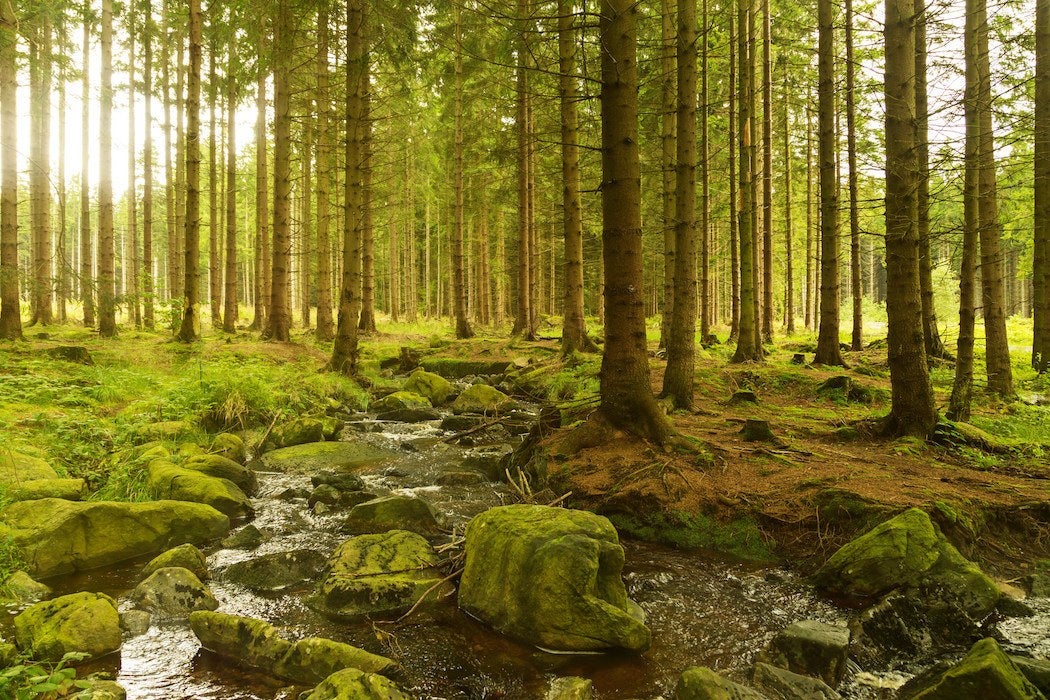At the climax of Shakespeare’s Macbeth, an entire forest moves from from one location to another, signifying the end of the title character’s reign. The play’s plot hinges on the assumption that a moving forest is absurd to the point of being unbelievable. Plants, after all, are not known for their locomotive ability.
In reality, forests do move, albeit on a different time scale than animals. For as long as plants have existed, they have migrated across the earth’s surface in response to changes in the climate. As the naturalists John Potzger and Ray Friesner evocatively described it in a 1939 paper on the migration of plant communities:
Vegetation is always an expression of the climate and as climate changed great masses of vegetation developed, advanced, retreated or in many instances perished leaving only the carbonized remains deep in the strata in parts of the globe where today cheerless winds blow monotonously over bleak ice and snow–fields thousands of feet in depth.
Today, as climate regimes undergo rapid shifts, the ability of plants to follow their preferred climates takes on a new urgency.
So, how does a forest, or any community of plants, undertake a migration? Although an individual plant can move only as fast as it can grow, plant seeds have evolved incredible hitchhiking capabilities. By taking advantage of wind, water currents, mammalian fur, and the digestive tracts of hemisphere-crossing birds, plants are capable of establishing colonies on even the most far-flung fragments of land. By making themselves appealing to mammals, they improve their odds of dispersal. The ubiquity of certain trees and vegetables that taste good to humans doesn’t reflect human ingenuity so much as it reflects the evolutionary advantages plants gain by bending humans to their will.
Once they’ve established a foothold in a new territory, pioneering plants are well-equipped to thrive in hostile environments. They can proliferate in even the smallest amounts of sunlight and water, fend off herbivores with poisons and thorns, and even communicate danger to one another. As climates shift, these long-distance dispersal and settlement tactics should ensure that plants can establish in new locations where conditions are favorable, even as their original sites become unsuitable.
But the migration strategies of plants, which evolved in a world where climates shifted gradually over millennia, may not be sufficient for the current, unprecedented speed of climactic change. Most plants rely on a combination of luck and volume: of the hundreds of thousands of seeds produced by each plant, maybe one or two will live to maturity. As the distance from the parent tree increases, the chances get smaller. Increasing the distance or decreasing the time scale of movement favors plants with higher seed production or better dispersal capabilities; those that move more slowly may not be able to keep up. Plants in areas with lots of intact forest may have a better chance of stringing together short-distance dispersal movements into longer migrations, while plants isolated in fragmented habitats have to send their seeds out over vast areas of unsuitable landscape to find more favorable conditions. The consensus is that some species—the less mobile, the more isolated—may fall victim to a warming climate before they are able to migrate.
Want more stories like this one?
Fortunately, proactive humans are already looking for ways to help these less-mobile species survive and relocate. In Svalbard, a remote island deep in the Arctic, a comprehensive global seed vault has been developed to preserve examples of the world’s plant species. The vault looks like the lair of a comic book villain: a concrete bunker beneath a mountain, where the permafrost helps keep seeds from breaking down over time. The Norwegian government, as well as the many agricultural organizations worldwide, are hoping it will one day provide a source for repopulating species lost to disturbance, war, and shifting environments.
Meanwhile, various groups of plant enthusiasts and foresters are testing out strategies for helping plants migrate by deliberately re-planting species in locations where climate projections predict suitable future habitats. Managed relocations, as these programs are called, incorporate a complex set of ecological, economic, and social considerations and can be controversial. After all, the deliberate or accidental movement of plants to novel locations can lead to uncontrollable invasions, threatening native species and agricultural crops. However, proponents argue that such strategies, if carefully managed, may help plants keep pace with changes in environmental conditions.
It’s unlikely that Shakespeare had such a scenario in mind when he envisioned an entire forest on the move, assisted by a human army. Nevertheless, in a time of strange climactic omens, Macbeth’s moving forest may provide a telling metaphor for our ecological future.







